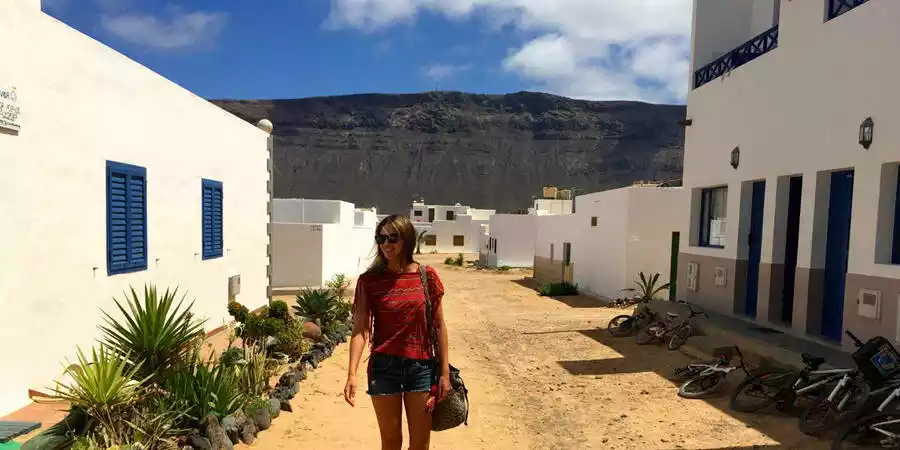
It is located in the middle of the Atlantic, uninhabited until the late 19th century, and currently with only two population centers: Caleta del Sebo, where the port is located, and Pedro Barba, a bit further north.
Everything else is pure nature, characterized by tropical temperatures and the few precipitations that occur throughout the year. This means that most of the surface is covered by dunes and sandy beaches, some shrubs, and volcanic rock.
Except for these population centers, the entire island is owned by the Autonomous Body of National Parks, under the Ministry of Environment, Rural and Marine Affairs.
Montaña Amarilla is a natural jewel that reflects the beauty and diversity of La Graciosa.
Montaña Bermeja is an experience that awakens all the senses and allows you to connect deeply with the beauty and serenity of La Graciosa.
Its spectacular natural formation and charming surroundings offer a unique experience that will leave you amazed and with memories for a lifetime.
An exhibition space with multiple themes that, in its 70 square meters, houses corners dedicated to: cetaceans, salt, the Chinijo Archipelago, aloe vera, and orchilla.
Composed of the island of La Graciosa, the islets of Alegranza and Montaña Clara, Roque del Este, and Roque del Oeste or del Infierno.
It is the second human settlement to have colonized the island of La Graciosa, now transformed into an exclusive and privileged vacation destination.
It is the main entry and exit point for the island, as it is the place where the boats that connect La Graciosa with the rest of Lanzarote dock.
A wide variety of excursions can be done around the Chinijo Archipelago departing from La Graciosa.
A magnificent alternative to explore La Graciosa and its exotic landscapes is to rent a jeep and tour the island.
A wide variety of ferry schedules to La Graciosa and transportation options make the eighth Canary Island much closer to Lanzarote than you think.